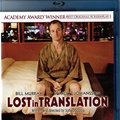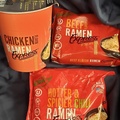It’s been 20 years since I graduated from college (!), and I realized I don’t have much to show from those days.
Old, laughably out-of-date clothes were turned into rags years ago; I’ve upgraded my cheap stereo with better equipment and newer CD technology; and I’ve driven several cars since my beloved Mazda Mizer. What I do have still with me are some books, a few pieces of artwork (I went to art school), jade plant (it’s huge), and my rice cooker.
It’s a small, three-cup cooker made by Matsushita, with an old “National” logo on its switch. My parents bought it for me when I went off to Pratt Institute in New York City in the hot summer of 1975, the same model they had given my older brother Gary the previous year when he took off for the Massachusetts Institute of Technology.
I didn’t use that rice cooker very regularly during college—my roommate Joe was such a great cook (he’s Italian) that we both took turns mixing up cuisines. I wasn’t very “ethnic” in my cooking anyway—I learned very creative ways to use “Hamburger Helper” without any hamburger.
In the years since then, I’ve used my rice cooker intermittently.
Still, I’ve been admiring my rice cooker lately. I’m amazed that I still have it, and that it still works fine, despite some nasty-looking dents in its white enameled exterior. There’s even some paint splattered on part of the lid—some kitchen painting project from 15 years ago, no doubt. I even have the little plastic measuring cup that came with the cooker.
Lately, I’ve gotten into the habit of making a full cooker of rice and snacking on it for the next few days.
I’ve gone to Pacific Mercantile, the local Japanese grocery store, for various additions to my plain white rice. I have a couple of kinds of furikake, flavored bits (one has red pepper, garlic, ginger, sesame seed, salt, bonito, seaweed, and a lot more) that are shaken and sprinkled over rice. I buy ochazuke, a seasoned soup base with tiny rice crackers and seaweed flakes which you sprinkle over leftover rice then douse with hot water. I have a couple of jars of a gloppy, salty seaweed paste I smear over rice. And, I have natto, which is vile to even many Japanese. It’s fermented soybeans with a strong and somewhat foul smell, which comes packed in a slimy, mucus-like film.
I know, I know—it sounds gross. And maybe it is. But I like it—I grew up with it, after all.
I was speaking with a Japanese American woman the other day, and once again was reminded that food is the last bastion of one culture as it assimilates into another.
Even JAs who speak hardly any Japanese, never take off their shoes in anyone’s homes and have never felt the inkling to visit the Land of the Rising Sun identify with rice. My family had rice with almost every meal. The only dinners without rice were when my mom would make spaghetti or later, when she mastered pizza. (An early example of Italian food pushing into my culinary territory!)
And usually, that was white rice, the plain stuff. My mom used to yell at my brothers and me if we even drizzled soy sauce on rice (OK, so it was more like we poured the Kikkoman on).
I could never understand a couple of things about how Americans eat. They seem to enjoy just cooking meat with no flavoring only to drown the meat in a sauce like “A-1” after it’s cooked. And, they think rice should be cooked in such a way that my mom would call it “porro-porro”—so fluffy it falls apart. We used to shriek at the TV commercials for Uncle Ben’s Minute Rice, which made a point of saying it was better because it wouldn’t clump together.
Don’t they know rice is supposed to clump together, so you can pick it up with chopsticks?
I’ll stick to my sticky rice, thank you, and my 25-year old National rice cooker.
* This article was originally published in Nikkei View on May 2, 1999.
© 1999 Gil Asakawa






